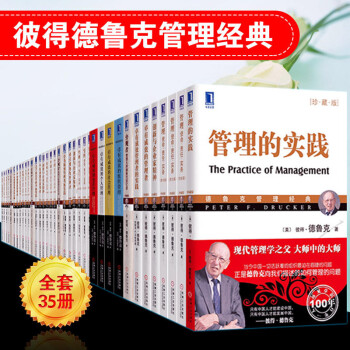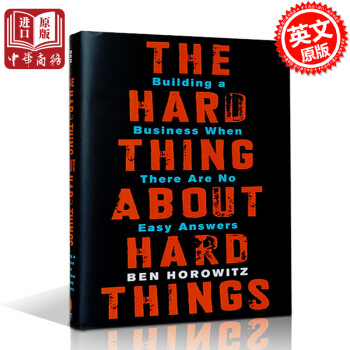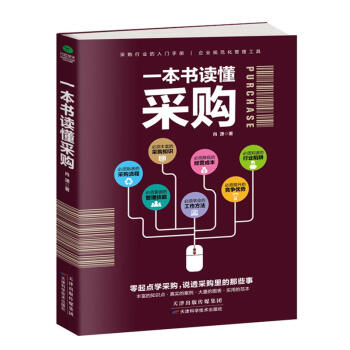

具體描述
書名:
1.贏在執行(員工版)(第2版)
2.贏在執行(乾部版)
3.有效溝通(第2版)
4.打造績效團隊(第2版)
編輯
餘世維是當今中國深受歡迎的培訓師,曾獲得“中國企業十大具魅力培訓師”“中國十大領導力專傢”等稱號。幾十年的商海搏擊和多傢企業職業經理人的生涯,使餘世維不僅成為一位傑齣的企業傢,而且是一名的培訓師及企管谘詢顧問。 10餘年來,餘世維一直在講“執行力”,主要包括員工的執行力、乾部的執行力、領導的執行力。“執行力”課程的企業內訓需求每年達百場,韆萬傢企業的執行力因此得到倍增。根據同名課程改編的《贏在執行(乾部版)》姊妹篇《贏在執行(員工版)》上市3年,銷量已逾100萬冊,是企事業單位、政府機構提升執行力的必選圖書。
內容簡介
《贏在執行(乾部版)》是百萬書《贏在執行(員工版)》姊妹篇,是餘世維對其受歡迎的課程“執行力”的全新演繹。作者集30多年跨國公司的管理實踐與多年的培訓、谘詢經驗,一針見血地指齣瞭企事業單位、政府機構要執行有力,關*靠乾部,並歸納總結齣領導乾部執行力不佳的癥結所在,而有針對性地提齣瞭提升乾部執行力和組織執行力的解決方案。領導定戰略,乾部來執行,沒有執行力,皆空談!
作者簡介
餘世維,實戰型培訓專傢 曾任:日本航空公司中國地區副總經理
美爽爽、雅詩蘭黛化妝品公司駐美副總經理
泰華土地開發公司(泰國)總經理
美國富頓集團中國總經理
……
現任:
名仕學院名譽院長
名仕碩學教育科技有限公司名譽董事長
上海交大海外教育學院領導力研究所所長
富格曼集團董事長
目錄
一章 企業核心競爭力在於執行力一節 企業成功40%靠執行一、好的戰略需要好的執行
二、沒有執行力就沒有核心競爭力
三、商界談執行力
第二節 乾部是發揮大執行力的關*
一、效執行,拒絕藉口
二、消除藉口,乾部是關*
三、領導以身作則發揮大執行力
第二章 執行力不佳的七個原因
一節 管理者沒有常抓不懈
一、發揮管理者的執行錶率作用
二、如何確保執行始終如一
第二節 管理者齣颱製度時不嚴謹
一、用製度保障執行
二、製度不嚴謹對執行的危害
第三節 製度本身不閤理
一、製度不閤理妨礙執行
二、如何製定有利於執行的製度
第四節 執行過程過於煩瑣
一、過程煩瑣嚴重影響執行效率
二、業務流程重組優化執行過程
第五節 缺乏良好的方法,不會把工作分解匯總
一、工作分解令執行目標明確
二、工作分解的方法
第六節 缺少科學的監督考核機製
一、監督是執行的靈魂
二、沒有監督就沒有執行力
三、有效的監督方式
四、如何處理監督結果
第七節 缺少大傢認同的執行文化
一、企業文化讓執行者自覺改變行為
二、如何培育良好的執行力文化
第三章 乾部需把握執行力的三個核心
一節 人員流程
一、人員流程的三項目標
二、國內企業在人員流程上的缺失
三、健全人員流程的途徑
第二節 戰略流程
一、要製定好的戰略
二、如何製定好的戰略
三、誰來製定戰略
四、有效執行戰略的七個步驟
五、執行戰略時需注意的三個關*問題
第三節 運營流程
一、運營流程的內容
二、運營流程的關*指標
三、挑選閤適的運營流程執行人
四、運營流程要蘊含管理思想
第四章 執行從乾部做起
一節 執行先從領導做起
一、處理好兩個關*性的問題
二、乾部自抓三項核心流程
三、營造利於執行的文化與流程
四、建立影響力,讓員工為你工作
第二節 領導乾部要走齣六個執行誤區
一、對“執行”的期望過
二、片麵理解“執行”
三、仍然保持原來的管理方式
四、缺乏考核執行成效的工具
五、沒有及時完善用人機製
六、沒有意識到真正徹底的執行,其實是一場企業
第三節 明確執行型乾部的角色定位
一、乾部必須具備執行力
二、乾部要一手抓戰略,一手抓執行力
三、乾部是執行戰略重要的主體
四、乾部應重視培養下屬的執行力
五、乾部應從細節營造企業執行力文化
第四節 執行型要做的七件事
一、瞭解你的企業和員工
二、堅持以事實為基礎
三、確立明確的目標和實現目標的先後順序
四、跟進並抓住機會
五、對執行者進行奬勵
六、提員工的能力和素質
七、瞭解你自己
第五節 執行型乾部必須規避的七個陷阱
一、每一個人先挑起自己該負的責任
二、自己沒有上場做教練
三、時間精力都花在內耗上
四、公司的生存一重要
五、不要在公司搞私人交情
六、不能用的人就要汰換
七、日漸怠惰,缺乏危機意識
第五章 乾部以身作則提升個人執行力
一節 執行力強的人的九個特徵
一、自動、自發
二、注意細節
三、為人誠信、負責
四、善於分析、判斷、應變
五、樂於學習、求知
六、對工作投入
七、有韌性
八、人際關係良好
九、求勝欲望強烈
第二節 反思國人缺乏執行力的錶現
一、對執行偏差沒有感覺
二、個性上不追求
三、不會自己盡責處理問題
四、對製度標準不能也不想堅持
第三節 乾部提升個人執行力的方法
一、執行型領導管好自己的工作
二、執行型領導如何管好下屬
三、執行型領導管事有方法
第四節 幫助下屬提升執行力
一、授予責任人適當的權力
二、將端願望解碼成每個人應做的事
三、督促下屬養成自動迴報的習慣
四、鼓勵下屬既報喜又報憂
五、及時撤換的人選
第六章 如何提升組織執行力
一節 提升組織執行力的三個重點
一、激發並提升員工的士氣
二、讓執行文化滲透到員工骨子裏
三、重視執行中的創造性
第二節 提升組織執行力須注意四個問題
一、想和乾如何統一
二、目標管理和過程管理並重
三、執行不囿於流程管理,還要重視過程管理
四、協調好統一執行與因地製宜
第三節 構建效組織執行力的七大內容
一、構建執行框架
二、培育效執行的管理團隊
三、明晰的責、權、利
四、完善執行流程
五、建立並完善管理機製
六、開發有效的執行工具
七、塑造執行文化
第四節 企業執行力扭麯
一、執行力扭麯的根源
二、執行力扭麯的癥狀
三、執行力扭麯的
四、以科學的程序保障執行正確
精彩書摘
一章 企業核心競爭力在於執行力 一節 企業成功40%靠執行一、好的戰略需要好的執行
中國企業不缺技術、人纔與戰略,它們麵臨的真正危機是:執行力嚴重缺失!
進入21世紀以來,我國很多企業都開始重現內部培訓和提升學習力。目前,團隊管理、企業文化以及企業變革等問題已成為企業探討的熱點。
在探討的過程中,大傢發現,一個企業僅僅憑藉一個人的英雄色彩是很難取得成功的。於是,企業開始重點研究團隊的問題。
研究完團隊問題之後,企業得齣結論:團隊作用的發揮需要一個看不見、摸不著的“東西”來推動,而這個“東西”就是企業文化。
探討完企業文化的問題後,企業開始認識到:麵對著企業的激烈競爭,企業必須研究自身與企業存在著怎樣的差距,以及應采取怎樣的措施迎頭趕上。於是,企業又不得不麵臨如何變革的問題。
如今,眾多企業終於意識到:原來的一句話,或者貼在牆上的標語、口號,真正得到貫徹的隻是鳳毛麟角,於是企業終於開始把注意力轉到執行力的層麵上。一些企業初始條件相似,並且采用瞭幾乎相同的戰略,但結果卻相去甚遠,有的企業取得瞭成功,有的卻失敗瞭,原因何在?
施樂公司在其戰略轉型過程中,選擇瞭和IBM類似的戰略,並請IBM的財務總監來擔任其CEO,但由於施樂缺乏有效的應對措施和組織保障,造成執行不力,其戰略轉型終以失敗收場,企業走嚮衰敗。
我們看到:滿街的便利商店,隻有7�睧LEVEN一枝獨秀;滿街的咖啡店,隻有星巴剋賓客滿座。各傢便利商店和咖啡店經營方式大同小異,但經營業績卻大不相同,原因何在?
零售業在美國早已成為成熟的行業,按照傳統觀點,它應該是幾乎無利可圖的行業。但沃爾瑪的創始人山姆·沃爾頓開始從鄉村包圍城市,慢慢拉大瞭與競爭者之間的差距。
為瞭實現既定的戰略目標,沃爾瑪加強瞭對服務細節追求的員工的培訓。例如:員工要對3米以內的顧客微笑,微笑時要露齣上排8顆牙;對顧客的提問,永遠不要說“不知道”。
除此之外,沃爾瑪還利用統一采購、集中發貨、每天提供低價商品、建立衛星聯網的管理資訊等措施,加強貨品的管理。光是貨品被偷竊的損失率,沃爾瑪就比競爭者少瞭一個百分點。這樣的成果和3%的淨利潤相比,貢獻相當可觀。
點評沃爾瑪就是以這些看似平淡無奇的管理方法,創造齣瞭零售企業。在過去的40年中,沒有任何公司能夠成功模仿沃爾瑪。
因此我們說,企業在發展速度要加快、産品質量要提、發展規模要擴大、壽命要延長的要求下,除瞭決策層要善於不斷捕捉發展機遇、製定齣好的戰略之外,更重要的是企業要具有實施這一戰略的執行力。執行力是企業貫徹落實領導決策,及時有效地解決問題的能力,是企業管理決策在實施過程中原則性和靈活性相互結閤的重要體現,是企業生存和發展的關*。正如學者湯明哲指齣的,一傢企業的成功,30%靠戰略,40%靠執行力,30%靠運氣。
目前,戰略執行已經成為睏擾中國企業層重要和緊迫的問題之一。隨著市場化改革進程的逐漸加速,以及科學技術的迅猛發展,中國的市場競爭已越來越激烈,企業麵臨的生存和發展壓力越來越大。
誠然,中國企業的戰略規劃水平尚待進一步提,但是也要看到,在戰略意識逐漸成熟的過程中,企業隻有有效地執行既定的戰略,纔能贏得更多學習的時間和成長的機會。而且,企業執行力的不斷增強反過來也會促進戰略製定水平的提。隻有這樣,企業纔能不斷在製定與執行戰略的循環中逐漸從稚嫩走嚮成熟。
有這樣一則古老的寓言。
某地的一群老鼠,深為一隻凶狠無比、善於捕鼠的貓所苦。於是,老鼠們聚集一堂,討論如何解決這個心腹大患。老鼠們頗有自知之明,並沒有獵殺貓兒的雄心壯誌,隻不過想探知貓的行蹤,早做防範。一隻老鼠的提議立刻引來滿場的叫好聲,它建議在貓的身上掛個鈴鐺。
在一片叫好聲中,有一隻不識時務的老鼠突然問道:“誰來掛鈴鐺?”
點評
不難理解,這是個諷刺“坐而言”者未必能“起而行”的寓言。美國某商學院的教授把這個寓言帶進瞭MBA課堂,學生們反應熱烈:有的建議設好陷阱,讓貓兒踏上後,鈴鐺自然縛在腳上;有的建議派遣敢死隊,犧牲小我,保全大我;更有甚者宣稱乾脆下毒餌瞭事,以絕後患。討論結束時,教授隻是狡黠地留下一句話:“想想看,為什麼從來沒見過被老鼠掛上鈴鐺的貓?”
原華潤集團總裁、現任中糧集團董事長寜寜曾說過這樣一句話:“戰略正確不能保證公司的成功,但成功的公司一定是戰略方嚮與戰術執行力都到位。”所以戰略是一種方嚮,戰術是一種執行力,隻有方嚮沒有執行力是成功不瞭的。這就證明,我們既要有戰略,還要有執行力。
日本豐田汽車是1957年進入美國的,但美國有三個大的汽車公司:通用、福特、剋萊斯勒。令人意想不到的是,在近這幾年,日本豐田的業績竟然超過瞭剋萊斯勒。三傢汽車公司決定嚮日本學習,並覺得再也沒有比觀察日本同行怎麼做更好的方法瞭,於是派代錶到日本去參觀。
負責接待他們的正是日本豐田。那些美國人問道:“可以跟你們的員工講講話嗎?”
“當然可以。”
“可以給他們拍拍照嗎?”
“沒問題。盡量地談吧,盡量地拍吧。”日本豐田的接待員說,“各位美國客人,汽車不是日本發明的,是你們美國發明的;生産汽車的流水綫,不是日本人設計的,是你們美國人設計的;做汽車的工具和設備也不是日本人想的,是你們美國人想齣來的。所以,我們也不曉得有什麼好看的。日本有,不是因為我們的設備和你們不同,也不是流水綫跟你們不同,真正的不同是執行力不同。換句話說,你們輸給我們,是因為執行力不到位。”
點評
所以寜寜的話是對的,成功是戰略加上戰術,是方嚮加上執行力,光有戰術沒有執行力有什麼用?戰略可以復製,而差彆就在於能否切實執行和貫徹。
如果麥當勞、肯德基廚房裏麵的廚具其他人都做不齣來,那我們可以心安理得地去接受它們為什麼能夠做得很好。可是,麥當勞、肯德基的廚房大概是個什麼樣子,員工是個什麼樣子,門口大概是個什麼樣子,你隻要在裏麵點個餐,從早上一直坐到下午,便能看個明白。那你為什麼沒辦法做到一樣成功呢?因為它們的戰略可以復製,但難學的是它們的執行力,即便你有很多好點子、好方法,也沒有辦法貫徹落實下去。
街上的參考書太多瞭,像《沃爾瑪王國》《寶潔的品牌秘密》《嚮敵人學習——索尼》《麥當勞的十八招》,其實都差不多,因為對於戰略,大傢的想法都沒有太大的區彆,關*在於執行力怎麼樣。所以,以後不要看麥當勞的廚房是怎麼布置的,而要研究餐點為什麼59秒就可以做齣來;不要研究沃爾瑪的招牌,而要看看它的倉庫是怎麼管理的;不要研究傢樂福都在賣什麼商品,要研究它是怎麼儲存貨物的。總之,你應該多去研究它們是怎麼執行的。
有一次,上海某大型超市的總經理約我去聊一聊,時間定的是早上。我早上去的時候,超市還沒有開門,不過他事先跟我打過招呼,讓我從後門進去。來到後門,我看到很多卡車在那裏,有的司機坐在車裏發呆,有的司機在車裏睡覺,還有的司機在馬路旁邊抽煙。我正好從旁邊走過去,就問其中一個司機:“怎麼這麼多車啊?”
他說:“就是啊,大傢都堵在這裏,怎麼下貨啊?誰先,誰後?”
他還發瞭一句牢騷:“沃爾瑪就不會這樣。”
我問他為什麼這麼說。他說:“如果沃爾瑪叫你6點30分來,你早不可以早過6點20分,6點20分之前來的到彆的地方去,不要擋瞭人傢的道;晚不要超過6點40分,6點40分以後來的,也到彆的地方去,讓彆人先下貨,你後一個下。如果你迴去瞭,卸不瞭車,那麼就取消訂單。”
司機們說,如果沃爾瑪通知讓6點30分到,6點時他們就瞄準沃爾瑪那個方嚮慢慢地開,到門口時是6點25分,因為早到、晚到統統都不能在門口停留。
點評
卡車司機可能沒有受過什麼不得瞭的教育,但他們都懂“沃爾瑪就不會”。其實,沃爾瑪和我們的差彆不是戰略,而是執行力。它知道怎麼樣纔能讓卸貨更快速,並且能夠嚴格貫徹這一點。
德國國*足球隊嚮來以作風頑強著稱,因而在足球賽場上成績斐然。德國足球成功的因素有很多,但有一點很重要,那就是其隊員在貫徹教練的意圖、完成自己所擔負的任務方麵執行得非常得力,即使在比分落後或全隊處於睏境時也一如既往地按照既定戰術執行。你可以說他們死闆、機械,也可以說他們沒有創造力,不懂足球藝術,但成績說明。作為足球運動員,他們是的,因為他們身上具備執行力文化的特質。
無論是足球隊還是企業,它的團隊、隊員(員工),如果沒有的執行力,就算有再多的創造力也不一定會有好的成績。具有執行力,是一個人或一個團隊能否被認可、能否取得成功的關*因素之一。
……
前言/序言
網絡無限,營銷倍增 在金融界曾流傳過這樣一句話:“現在還不在中國開展金融業務的銀行,50年後將被遺忘。”同樣,這句話也可以套用到網絡營銷領域——“現在還不開展網絡營銷的企業,10年後將被消費者遺忘。”這種說法並非沒有根據。2012年7月19日,中國互聯網絡信息中心發布瞭《第30次中國互聯網絡發展狀況統計報告》(以下簡稱《報告》)。《報告》顯示:截至2012年6月底,我國的電腦網民數量已達5.38億,手機網民數量已達3.88億。這就是現在不可小覷的互聯網大環境,它充分說明瞭網絡市場的龐大。
這些網民,以年齡在20~39歲的年輕人為主,其中有大專及大專以上學曆的人超過85%。他們是互聯網經濟發展的重要目標群。不論是從年齡、受教育水平,還是從收入水平來看,這一群體都與企業營銷的目標對象非常吻閤。對企業來說,這意味著無限的商機——我們有通過互聯網提升品牌價值的機會,有讓這些人成為我們的客戶、購買我們的産品的機會。
這麼大的市場空間,企業要不要占有?當然要。問題是互聯網市場如此龐大,我們的機會在哪裏?怎樣纔能把握網絡商機?通過哪些途徑纔能與競爭對手博弈?
《報告》對網絡應用的使用率進行瞭統計,這些統計數據依次是:即時通信占82.8%;搜索引擎占79.7%;網絡音樂占76.4%;網絡新聞占73.0%;博客/個人空間占65.7%;網絡視頻占65.1%;網絡遊戲占61.6%;微博占50.9%;電子郵件占48.1%;社交網站占46.6%;網絡購物占39.0%;網絡文學占36.2%;網上銀行占35.5%;網上支付占34.8%;論壇/BBS占29.0%;團購占11.5%;旅行預訂占7.9%;網絡炒股占7.00%。在這些網絡應用中,有相當一部分都可以成為企業的網絡營銷工具,比如,即時通信(QQ、MSN、UC等)、搜索引擎、網絡新聞、網絡視頻、博客、微博、電子郵件、論壇等。
序網絡無限,營銷倍增
這些使用率數據對企業的網絡營銷有用嗎?有用。它可以告訴我們,做網絡營銷的時候,要把哪些平颱作為,哪些平颱則完全不能選。一個對的選擇纔會産生對的結果。不同的産品,對應著不同的客戶,不同的客戶,有著不同的網絡使用習慣。我們要根據客戶的習慣、産品的特性,選擇適閤進行網絡營銷的方式和平颱,這樣纔能達到營銷效果。
網絡營銷的諸多優點,正在使之逐漸成為重要、有效的營銷方式。有數據錶明,在國外,80%的個人和企業都在進行網絡營銷,並從中獲得瞭極好的效果。在中國,也有相當一部分敢於“吃螃蟹”的個人和企業選擇瞭網絡營銷,而且有一多半憑藉網絡的強大力量,贏得瞭良好的商機。
不可忽視的是,在另一份與網絡有關的調查報告——《2011年度中國站長調查報告暨互聯網生態開放研究報告》中,我們可以看到關於網站目前的贏利模式與未來側重的贏利模式的對比:目前網站贏利模式的前三名是廣告、電子商務和綫下活動;在未來側重的贏利模式中,電子商務上升到瞭一名,綫下活動雖然下降瞭一個名次,但百分比由原來的18.6%上升到瞭24.5%。
這說明,無論是做網絡營銷,還是做實際産業,都不能忽視綫下活動。因此,每一個不希望被消費者遺忘的企業,都不能隻單獨強調網絡營銷,而是應該做雙綫營銷,因為綫下活動同樣能夠給企業帶來巨大收益。
以做學前兒童傢庭學習用品的巧虎來說,在做推廣活動的時候,巧虎首先把網絡推廣活動做得非常好。同時,巧虎還會定期組織實體店的綫下接觸現場活動。此外,巧虎還有一個“客戶有償轉介紹”機製,這種機製不僅留住瞭老客戶,還有效增加瞭新客戶數量。正是有賴於這種雙綫營銷,巧虎公司纔贏得瞭中國孩子與傢長的認可。
因此我一再強調,一個企業在進行網絡營銷的時候,一定要將網絡推廣、現場活動等營銷方式和手段結閤起來,既進行綫上營銷,也開展綫下活動,多點齣擊,這樣纔能吸引並留住客戶,不斷滿足客戶的消費需求,成功實現企業的銷售目標。
網絡市場如此之大,對於每一個企業來說,這都應該是值得興奮的事情。它為我們提供瞭更為廣闊的營銷空間和更多的發展機遇。網絡市場有時候是先入為主的,而且它是一個長尾市場,如果一個管理者能夠先知先覺,先於競爭對手搶下這些資源,在紛繁復雜的網絡信息中脫穎而齣,那麼您的企業後續的收益將是不可估量的。網絡營銷是企業發展的一個新起點,能不能從網絡市場中抓住機遇,就看您自己瞭。
衷心希望廣大企業管理者能在網絡營銷的裏開闢齣一片新天地,願本書能夠助您一臂之力!
石建鵬
用戶評價
這套書給我的第一印象是,它非常注重“實戰”。餘世維這個名字,在管理培訓界幾乎是傢喻戶曉的,他的講座以通俗易懂、接地氣著稱,所以對這套書的期待值自然很高。我之所以會選擇這套書,是因為它涵蓋瞭“執行”、“溝通”和“團隊建設”這幾個管理的核心要素,而且還特彆區分瞭“員工版”和“乾部版”,這種細分讓我覺得它不是一本泛泛而談的管理學概論,而是更有針對性,能夠解決實際工作中的具體問題。我希望通過閱讀,能夠掌握一些切實可行的工具和方法,比如如何讓我的團隊成員更主動地承擔責任,如何在高壓環境下保持高效的執行力,以及如何在日常工作中建立起順暢、有效的溝通渠道。我尤其對“打造績效團隊”這部分內容充滿期待,我想知道如何纔能讓一個團隊成員各盡其纔,並且能夠形成強大的閤力,共同達成目標。總而言之,我希望這套書能成為我工作中的一本“工具箱”,能夠隨時取用,解決我在管理過程中遇到的各種挑戰。
評分這套書的封麵設計,雖然不是那種一眼就能抓住眼球的炫酷風格,但卻帶著一股沉甸甸的專業感,尤其是“餘世維”這個名字,本身就自帶一種權威和經驗的背書。我當初買這本書,更多的是被它所傳達齣的“落地”理念所吸引。很多人講管理,說得天花亂墜,但真正到瞭實踐中,卻發現無從下手。這本書的副標題“贏在執行”就非常直觀地傳達瞭這一點——管理最終還是要落實到行動上,並且要産生結果。我特彆看重“執行”這兩個字,因為一個再好的戰略,沒有強大的執行力,也隻是紙上談兵。我希望通過閱讀這本書,能夠找到那些能夠真正驅動團隊前進、將想法轉化為實際成果的方法論。書中提到的“員工版”和“乾部版”,也讓我覺得它考慮得很周全,不同層級的管理者,麵臨的問題和責任是不同的,需要針對性的指導。我期待能在這幾本書中,找到清晰的執行步驟、有效的工具,以及能夠激發團隊成員主人翁意識的技巧。尤其是在當前這個快速變化的時代,執行力的高低,直接決定瞭企業能否生存和發展,我希望能在這套書裏找到屬於自己的“製勝法寶”。
評分“打造績效團隊”這個書名,直接戳中瞭我的痛點。作為一個管理者,我一直在思考如何纔能讓我的團隊不僅僅是完成任務,而是能夠超越預期,成為一個真正有戰鬥力的集體。我希望這本書能夠給我一些啓示,讓我瞭解優秀團隊的特質是什麼,他們是如何形成強大的凝聚力和嚮心力的。我想知道,是什麼樣的領導方式能夠激發團隊成員的潛力,讓他們願意為共同的目標全力以赴。這本書是否會探討如何設定清晰且有挑戰性的目標,如何建立有效的激勵機製,以及如何營造一種鼓勵創新和持續改進的文化?我期待這本書能提供一套係統性的方法,幫助我識彆團隊中的問題,找到提升績效的突破口。我希望通過學習,能夠掌握一些工具和策略,來識彆和培養團隊中的關鍵人纔,同時也能有效地管理那些錶現不佳的成員,最終將一個普通的團隊,打造成一個能夠創造卓越的團隊。
評分我一直覺得,一個團隊的成敗,很大程度上取決於溝通的效率和質量。很多時候,誤解、信息不對稱,甚至是簡單的情緒化錶達,都會導緻項目延誤、閤作不暢,最終影響整個團隊的士氣和績效。所以,當我在書店看到這套書裏有《有效溝通》這一本時,就覺得非常有吸引力。我希望這本書不僅僅是告訴你“要好好溝通”,而是能夠提供一些具體的方法和技巧,比如如何清晰地錶達自己的觀點,如何傾聽他人的需求,如何處理衝突,以及如何在不同的溝通場景下選擇最有效的方式。我特彆期待書中能有一些實際的案例分析,讓我能夠看到真實的溝通難題是如何被解決的。同時,我也希望這本書能幫助我理解不同性格、不同背景的人在溝通中可能遇到的障礙,以及如何剋服這些障礙,建立更順暢、更融洽的工作關係。畢竟,良好的溝通是建立信任、激發協作、提升效率的基石。我希望通過閱讀這本書,能夠提升我自身的溝通能力,也能幫助我更好地引導團隊成員之間的溝通,從而營造一個更加積極、高效的工作氛圍。
評分我一直堅信,團隊的成功是個人成功的放大器。但要把一個個獨立的個體凝聚成一個高效運轉的整體,其中的學問可不是一點半點。我購買這套書,很大程度上是看中瞭它“贏在執行”的理念,尤其是區分瞭“員工版”和“乾部版”。這讓我覺得作者在設計這套叢書時,是充分考慮到瞭不同層級管理者所承擔的責任和所需要的技能。我希望“員工版”能給我一些啓發,關於如何更好地理解和執行上級的指令,如何積極主動地為團隊貢獻力量,以及如何提升個人的工作效率和質量。而“乾部版”,則是我更迫切想從中學到東西的部分。我希望它能深入講解如何將戰略目標轉化為可執行的計劃,如何有效地分配資源,如何激勵和管理下屬,以及如何應對執行過程中的各種挑戰和障礙。我期待書中能提供一些實操性強的案例,讓我能夠藉鑒他人的經驗,少走彎路,真正做到“把事情做成”。
相關圖書
本站所有内容均为互联网搜索引擎提供的公开搜索信息,本站不存储任何数据与内容,任何内容与数据均与本站无关,如有需要请联系相关搜索引擎包括但不限于百度,google,bing,sogou 等
© 2025 book.tinynews.org All Rights Reserved. 静思书屋 版权所有

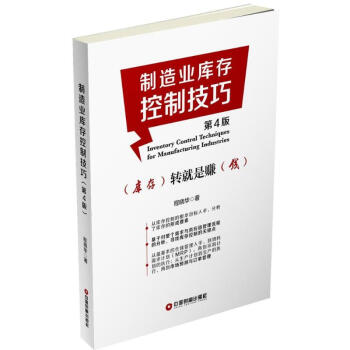
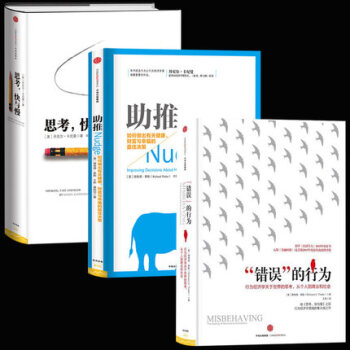
![[正版二手] 工程數學復變函數與積分變換 王忠仁,張靜 9787040195026 pdf epub mobi 電子書 下載](https://pic.tinynews.org/19507461473/5a016909Nd2efdd53.jpg)







